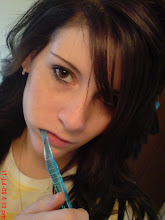BA (Hons.) GRAPHIC DESIGN
END OF MODULE SELF-EVALUATION
Module Title VISUAL LANGUAGE NAME Lindsey Marshall
BLOG ADDRESS lindseymarshallbagd.blogspot.com
1. What skills have you developed through this module and how effectively do you think you have applied them?
I’m quite happy with how my skills have developed in this module. I’ve used illustrator a fair bit to give a better finish to my work, so I’m pleased with that.
I’ve just been trying to get on with my work really, so I’ve used whatever skills I’ve got to help my work progress as much as possible.
2. What approaches to/methods of research have you developed and how have they informed your design development process?
I’ve used my blog quite effectively At first I struggled to get used to evaluate my work online, but it’s becoming more natural as the course progresses.
I’ve learnt to rely more on books rather than the internet for research which I’m happy about, because the information online isn’t always accurate.
3. What strengths can you identify in your work and how have/will you capitalise on these? I think my research is a strong area in my work. I like to know what I’m going to be doing, and like to have a clear view on where I might take my work. |
Specifically, I like to work with type, so I’ve taken it within me to purchase relevant books to refer to, even for future use. I also like to browse online the works of others.
4. What weaknesses can you identify in your work and how will you address these more fully?
I still feel as though my final resolutions aren’t as good as they can be. Recently, I’ve been very pleased, although there have been a few occasions. It’s never been my strong point, so I definitely need to make sure I keep enough time to focus on the final outcome.
5. Identify five things that you will do differently next time and what do you expect to gain from doing these?
1. I need to look at other work produced in the class more, and document.
2. I feel very dismissive of projects, which may not be of much interest to me. So I need to try and make myself more motivated.
3. I still feel as though I need to make sure I set out time limits for each park of the project, so I have more than enough time (if needed) to produce a final outcome to a higher standard.
4. I need to stay in college more to do my work. I tend to go home when we have time to get on with what we need to do. I feel more comfortable, and as though I can access more of my own materials instead of having to bring everything in, just incase I need something. I collect loads of material, paper etc, and like to use it in my work.
5.
6. How would you grade yourself on the following areas? (please indicate using an 'X')
5= Excellent, 4= Very good, 3= Good, 2= Average, 1= Poor
Attendance 3
Punctuality 1
Motivation 3
Commitment 2
Quantity of work produced 3
Quality of work produced 2
Contribution to the group 2
The evaluation of your work is an important part of the assessment criteria and represents a percentage of the overall grade. It is essential that you give yourself enough time to complete your written evaluation fully and with appropriate depth and level of self-reflection. If you have any questions relating to the self evaluation process speak to a member of staff as soon as possible. |
 Here's another piece of work by Jenny Holzer. I can't say I understand it, althoooough.. again, it appeals visually to me.
Here's another piece of work by Jenny Holzer. I can't say I understand it, althoooough.. again, it appeals visually to me. 




 Fashion:
Fashion:









































